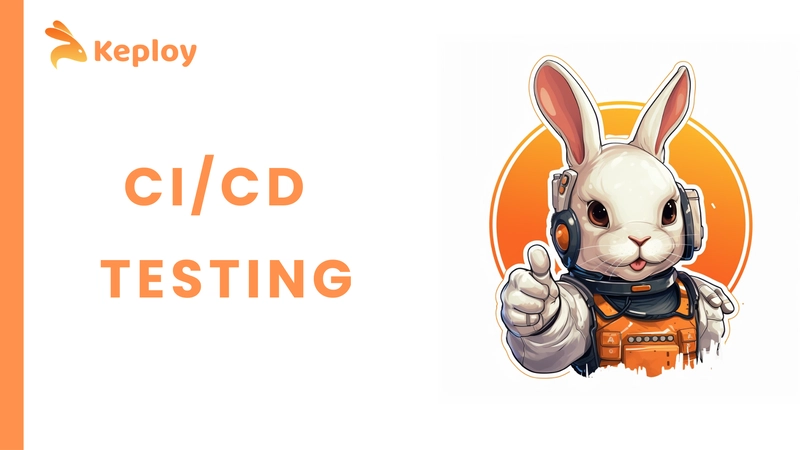In today’s fast-paced software development landscape, CI/CD (Continuous Integration and Continuous Deployment) has become a crucial practice for delivering high-quality software efficiently. CI/CD enables teams to automate testing, integration, and deployment, reducing manual errors and ensuring faster release cycles.
This guide explores CI/CD, its benefits, best practices, and how businesses can implement it effectively to enhance software delivery.
What is CI/CD?
CI is the practice of frequently integrating code changes into a shared repository. Each integration is automatically tested, ensuring that new code doesn’t break the existing system. The primary goal of CI is to detect and fix bugs early, promoting collaboration among developers.
CD extends CI by automatically deploying tested code to production environments. This allows organizations to release updates frequently and reliably, improving customer experience and reducing downtime.
Key Differences:
- CI focuses on code integration and testing
- CD ensures automated deployment to production
- CI/CD together form a DevOps pipeline
Benefits of CI/CD
✅ Faster Release Cycles — Automating testing and deployment accelerates software delivery.
✅ Early Bug Detection — Continuous testing helps catch errors before production.
✅ Improved Collaboration — Developers merge code frequently, reducing integration conflicts.
✅ Higher Quality Software — Automated testing ensures stability and performance.
✅ Reduced Manual Effort — Automating repetitive tasks saves time and resources.
Best Practices for Implementing CI/CD
1. Use a Version Control System (VCS)
A VCS like Git enables collaboration and keeps track of changes efficiently. Platforms like GitHub, GitLab, and Bitbucket integrate well with CI/CD pipelines.
2. Automate Build and Testing
Ensure that your pipeline includes automated build and testing processes. Tools like Jenkins, GitHub Actions, and CircleCI help automate workflows.
3. Adopt a Containerized Environment
Using Docker and Kubernetes ensures that applications run consistently across different environments.
4. Implement Infrastructure as Code (IaC)
Tools like Terraform and Ansible help automate infrastructure provisioning and management.
5. Monitor and Log Deployments
Use logging and monitoring tools like Prometheus, Grafana, and ELK Stack to track system performance and detect issues.
6. Secure the Pipeline
Implement security checks using tools like Snyk and SonarQube to identify vulnerabilities in the codebase.
7. Use Feature Flags
Feature flags allow developers to release new features gradually and rollback changes without deploying new code.
CI/CD Tools You Should Know
🔹 Jenkins — Open-source automation server for building, testing, and deploying applications. 🔹 GitHub Actions — Native CI/CD solution for GitHub repositories. 🔹 GitLab CI/CD — Integrated CI/CD solution in GitLab. 🔹 CircleCI — Cloud-based CI/CD tool for DevOps teams. 🔹 Travis CI — A simple CI/CD tool for open-source and commercial projects. 🔹 ArgoCD — GitOps continuous delivery tool for Kubernetes applications.
CI/CD Workflow: Step-by-Step Implementation
1️⃣ Code Commit: Developers push code to a version control repository. 2️⃣ Automated Build: CI server compiles and builds the application. 3️⃣ Automated Testing: Unit and integration tests ensure code quality. 4️⃣ Artifact Creation: A deployable package (container/image) is created.
5️⃣ Deployment to Staging: Code is deployed to a staging environment. 6️⃣ Automated Acceptance Tests: End-to-end tests validate the application.
7️⃣ Production Deployment: Successfully tested code is deployed to production.
8️⃣ Monitoring & Logging: Continuous monitoring ensures system stability.
Common CI/CD Challenges and How to Overcome Them
❌ Slow Pipelines → Optimize tests, parallelize builds, and cache dependencies.
❌ Flaky Tests → Regularly review and fix unreliable test cases. ❌ Security Risks → Implement security scanning in every pipeline stage.
❌ Manual Approvals → Use feature flags for controlled rollouts.
Conclusion
CI/CD is a game-changer for modern software development, ensuring faster releases, improved quality, and enhanced collaboration. By implementing best practices and leveraging the right tools, teams can build robust CI/CD pipelines that streamline development and deployment processes.
Are you ready to optimize your CI/CD workflow? Start integrating automated testing and continuous deployment into your development lifecycle today! 🚀



Top comments (2)
Your formatting leaves something to be desired...
Thanks for point out!
Now i edited.